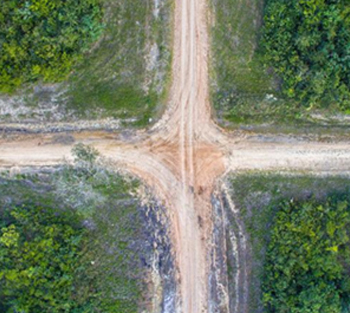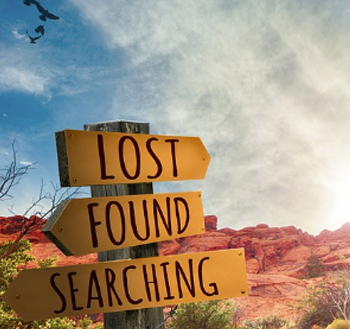4 min read:
 How We’re Led to Change
How We’re Led to Change
Imagine yourself in the following scenario: You’re moving through the daily routine of life, trying to accomplish your goals in the midst of mounting stressors and responsibilities. As time goes on and fatigue sets in, your focus shifts from staying the course to staying afloat.
The reality of your life and the expectations you held for it feel misaligned. As this awareness takes shape, it becomes increasingly hard to ignore. You’re not exactly sure when this happened, how you got here, or what it would look like to find your way back to a meaningful path.
For most of us, this scenario is not difficult to imagine, as we typically encounter an iteration of it at the precipice of change. Once we find ourselves at this crossroads, we’re tasked with figuring out how to navigate our way through it.
 How Fear Gets in the Way
How Fear Gets in the Way
While being at the crossroads of change can be an exciting experience if we feel assured in the direction we’re going, it may elicit feelings of fear and anxiety when we are uncertain of the path or how to engage in the process of discerning.
To better understand how fear influences us at this crossroads, it is helpful to examine the function of fear and how it communicates with the brain.
From an evolutionary perspective, fear’s purpose is to promote survival by signaling the brain to activate our stress responses. In doing so, our focus gets diverted from areas of the brain deemed non-essential to survival.
The prefrontal cortex is one such area that goes offline under perceived threat. Known as the part of the brain that links us to our humanity, it is responsible for functions like impulse control, complex thinking, and creativity.
Let’s head back to the proverbial crossroads of change to examine how fear hijacks the steering wheel:
We begin driving frantically down multiple roads at a heightened speed, searching for the right path or fleeing to safer ground, not pausing long enough to orient to direction. This reaction, known as hyperarousal, is the ‘fight or flight’ plight, and it can look like fast and frequent decision-making and/or thought perseveration either to address or avoid change.
Alternatively, we may find ourselves stopped in the middle of the intersection, overwhelmed by the prospect of choice and unable to take our foot off the brake. This state, known as hypoarousal, or the ‘freeze’ state, can look like decision paralysis and dissociation from the present.
Although our stress responses play a crucial role in keeping us alive and safe, they steer us away from intentional decision-making, reacting to the prospect of change rather than responding to it.
Simply put, when fear becomes our main compass to navigate through this crossroads, we disconnect from the parts of ourselves that make us uniquely human, leading us farther away from our purpose.
 Values as a Roadmap
Values as a Roadmap
So how do we find our way back? To start, it would be helpful to have tools other than fear to help us navigate through the vulnerable journey of change. One such tool is our values.
The term ‘values’ can feel nebulous, sometimes acting as a barrier to engaging in values exploration. I like to think of values as principles and beliefs that reflect what is important to us. When there are so many reference points for navigating the crossroads of life (fear, external demands, history, etc.), our values reorient us toward a path that feels meaningful to us, serving as a roadmap back to ourselves.
Where to Start
To begin this process of values exploration, you may start with some tools to write and a simple question; what is important to me?
What are some things that came to your mind immediately as you read that question: family, friends, career, health, adventure? Jot whatever comes up in the order you thought about it. This process of free association can illuminate both what kind of values we hold as well as how they are currently prioritized in the mind.
If you’d prefer more structure for your values exploration, Dr. Brene Brown has a helpful values worksheet here to get you started. She pulls a long list of values (with space for you to write your own in) and tasks you with picking two values that feel central to who you are. (Prioritizing two values stems from her research on the merit of prioritization due to our limits of focus and attention).
Given how difficult selecting only two values can be, she advises that you start by circling around 10-15 that jump out at you. From there, you can start the process of narrowing by reflecting on this question; what are the two values by which all of the other values are formed and facilitated?
The key ingredient to engaging in values exploration is intentional reflection. By allowing ourselves the time and space to pause, think about, and feel out what matters to us, we begin the process of connecting back to ourselves.
This connection has the power to guide us through the fear and vulnerability that often arise when we are called upon to navigate through meaningful change.

